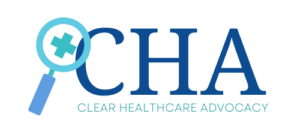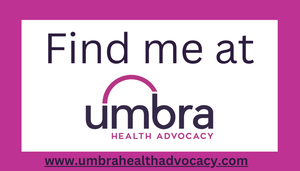I listened to an interesting podcast a couple weeks ago regarding healthcare-related “cascade events.” (I realize “interesting” might be a stretch for those of you who, unlike me, aren’t completely geeked out by all things relating to the ridiculous cost of healthcare—but don’t stop reading, yet.) What made this podcast really interesting to me was that I’d just been through a little cascade event of my own.
What the heck is a cascade event? In generic terms, a cascade event is any event that is a direct or indirect result of a preceding event. In healthcare, cascade events have come to refer to tests, biopsies, and other procedures resulting from an initial—often low-value—test.
And, what’s a low-value test? Low-value tests/treatments are those that tend to have very minimal clinical value. Often-cited examples are pre-operative EKGs prior to cataract surgery, chest X-rays, and antibiotics given for non-bacterial infections. Unfortunately, these low-value tests and treatments can trigger cascading events that end up hurting patients psychologically, physically, and/or financially if they result in anxiety-producing incidental findings (think of that mysterious spot noted on a chest X-ray, which you immediately think must be cancer), more invasive procedures (when that abnormal spot on your chest X-ray least to an MRI that leads to a biopsy), and more out-of-pocket expense (MRIs and biopsies aren’t free).
One expert on the podcast I was listening to (the March 3, 2022 episode titled “Pain, Fear, and Waste: The Costs of Unnecessary Care” of the Tradeoffs podcast) calls these incidental findings “incidentalomas”—abnormal findings on a low-value or not medically necessary test that lead to more testing and, ultimately, a benign result. Often, they are findings that you might’ve lived the rest of your life without knowing about because they never would have caused you a problem.
What does a cascade event look like? My recent cascading event started with a self-ordered heart scan—you know, the $59 scans hospitals advertise on TV and billboards these days. There was no medical indication for me to have the test; I’d simply heard of yet another otherwise-healthy acquaintance about my age (47) having a heart attack, so I decided it was time to find out if the exorbitant amounts of Qdoba nachos and buttery, Kosher-salted popcorn I’ve consumed over the past umpty-ump years had begun to take their toll on my arteries. And the $59 out-of-pocket expense would be totally worth the peace of mind!
After a week or so, when I hadn’t heard anything from my PCP (who should have received the results of my heart scan, despite having no idea I was having one), I logged into my online account and found the report myself. My results? 1) A coronary artery calcium of zero (That’s the best score! Here’s to more nachos and popcorn!), and 2) an “indeterminate density 2.3 cm lesion within the posterior right hepatic lobe.” Lovely. I’d gone into this heart scan expecting to find that my arteries were half-clogged with queso diablo and butter, and I came out of it with a lesion on my liver. “Further evaluation by MRI of the abdomen with intravenous contrast” was recommended.

My mind immediately went where most patients’ minds would go: either I had liver cancer, or I’d finally consumed so much Pinot Grigio that my liver had begun to rot. I messaged my PCP to make sure she’d seen the results. Fortunately, she nipped a lot of my anxiety in the bud by telling me they often see this on heart scans and the lesions are usually benign hemangiomas. But, she added, an MRI was definitely needed to confirm that my lesion was benign. Suddenly, my $59 heart scan had led to a much more expensive MRI—and I began to write my own obituary in my head.
It’s easy to see how/why these cascade events get started. In a world in which patients can hop on the interwebs and immediately diagnose themselves with the worst of medical conditions—and then push their doctors for whatever testing is necessary (based significantly on an emotional decision) to rule out said condition, and a world in which physicians and other healthcare professionals must constantly figure the risk of a lawsuit into their medical decision making, it’s a wonder that not every diagnostic test leads to a cascade event.
It’s also easy to see why hospitals/other healthcare facilities offer $59 heart scans and other low-cost, low-value tests: they’re banking on the fact that the findings from these tests—whether related to the initial test or completely random, like mine—will lead to additional tests/procedures being performed at their facility.
In my case, after doing a little research and finding out that I’d owe over $1500 for my MRI if done at the hospital where I’d had my heart scan versus owing $850 if done at the stand-alone imaging center down the street (that’s about 45% less, y’all), I scheduled my MRI at the stand-alone facility.
In the end, the MRI revealed that the lesion on my liver was indeed a benign hemangioma (my very own “incidentaloma”!!). But this only after I experienced the psychological, physical, and financial repercussions the podcasters had mentioned: anxiety over thinking I was going to die of liver cancer/liver rot; an IV needle in my arm and the injection of contrast into my body; and the additional $850 out-of-pocket expense.
What—if anything—can be done to stop these cascading events? Perhaps nothing. After all, often these “events” are simply part of the medical diagnosing process. And sometimes these events are blessings in disguise (how many stories have you heard of people going to the ER for one problem and finding something completely unrelated, but potentially life-threatening that might have led to a horrible outcome if not detected?). But being aware of cascade events and the likelihood of “incidentalomas” could prompt us to have more open conversations with our physicians regarding the value of certain tests…and then make decisions to proceed with further testing based on evidence versus emotion.
It’s highly likely that our physicians will still want to cover all their bases (whether by ordering the initial test that starts the cascade or by ordering the follow-up tests/procedures needed to diagnose an incidental finding). After all, our doctors don’t want to miss a diagnosis because a) they genuinely care about our welfare, and b) they don’t want to get sued.
It’s also unlikely that, even after reading studies/being quoted statistics regarding the value of certain tests, patients will be content with not following up on an incidental finding; we’d rather undergo a more invasive and/or expensive procedure to find out everything is okay than walk around wondering what’s going on inside our bodies and whether there’s something we could be doing to stop it.
In conclusion, I have no conclusion. I’d like to wrap things up in a tiny little bow and tell you I’ve got the magic solution to avoiding unwanted cascade events; but, alas, I do not. I suppose the whole point of this post is to simply make you aware of cascade events and their potential impact on your health (good and bad), your emotions, and your pocketbook. Thank you for subjecting yourself to my cascading thoughts. Stay healthy, and carry on…







